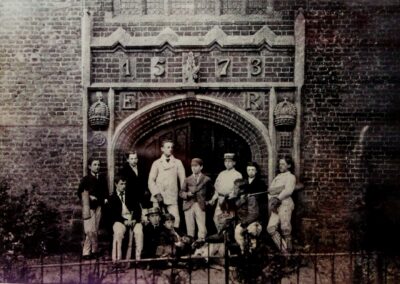Every monarch since Edward the Confessor has used a unique seal to approve important state documents.
Seals allowed an appointed officer to authorise documents rather than a monarch having to sign in person. Only one design was ever in use at once making forgeries difficult. A pictorial authorisation was also important when most people could not read or write.
Most monarchs had only one seal during their reign. However, Queen Elizabeth I reigned for a long time and her first seal became worn out. She commissioned the artist Nicholas Hilliard to design a second seal which was more elaborate in design than her first.
The school charter was authorised using the Queen’s first seal. The design on both sides of the seal is very simple. However, the iconography used on the seal is just as important as that found on the charter itself.
On the obverse the Queen is shown seated on her throne holding an orb and a sceptre ending with a fleur-de-lis. On her left is a shield representing France and England. Now missing, the same shield was depicted on her right. Also partially missing is the motto QUEEN ELIZABETH DEFENDER OF THE FAITH OF ENGLAND, FRANCE AND IRELAND BY THE GRACE OF GOD written in Latin.

This image is very similar to that depicted in the top left-hand corner of the charter and shows the Queen in ‘majesty’ representing her power and status as an anointed Queen.
On the reverse the Queen is shown on horseback holding a sceptre ending with a fleur-de-lis. On her left (partially missing) is a double Tudor rose, crowned and on her right a small fleur-de-lis. The motto from the obverse is repeated.

The Tudor rose has become the traditional floral heraldic emblem for England but it originated with Tudor Henry VII when he united the Houses of Lancaster and York through his marriage to Elizabeth of York in 1486. It represents a united country and Queen Elizabeth’s right to the throne through inheritance.
When a monarch dies their seal is destroyed and a new one created.





